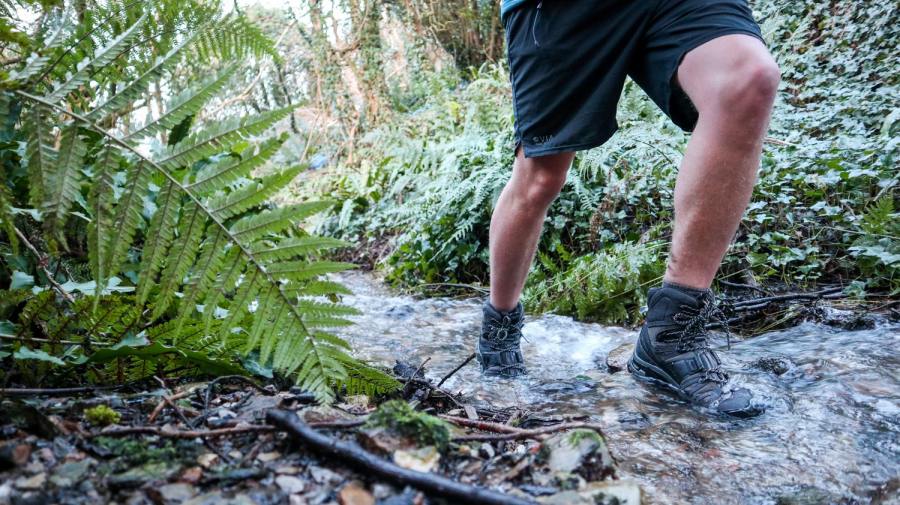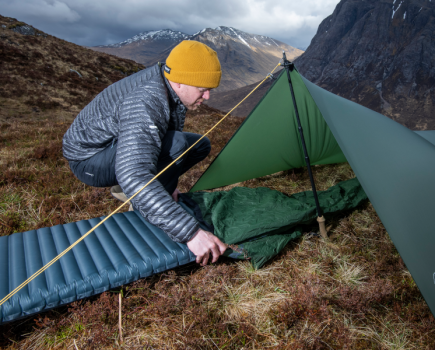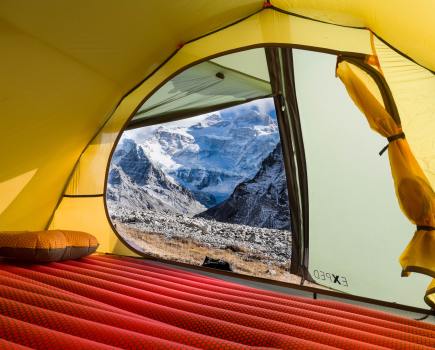A boot buyer’s guide; the things to look out for and to consider when buying a new pair of walking boots.
Walking boots come in different categories to suit different types of use. In this article, we’re going to describe the various types and what they’re best suited to. We’ll also highlight the smaller details to look for when you’re in the market for a new pair of hiking boots.
Hiking boot categories
Walking boots tend to be classified by the season or seasons that they’re appropriate for. Winter boots will, you guessed it, be designed for the colder months, there are light and well-ventilated boots that are designed for the summer months and then, most common of all, there are three-season boots.
A guide to three-season hiking boots
Three-season boots are designed to suit conditions between the start of spring and the end of autumn and that means they’re generally considered to be the most versatile. Every hiker, from serious backpackers to the casual country walker, should have a pair of three-season hiking boots in their armoury. They’ll without a doubt be the pair that you’ll wear the most.
So, what makes a good pair of three-season hiking boots? Well, there are numerous factors to consider. What’s most important is that they’re comfortable, protective, supportive and grippy. Depending on your preferences and requirements, you then want to consider their flexibility (more on that below) whether they’re waterproof, breathable or cool or warm. Other factors some might want to consider will then include the price, durability, eco-friendliness and standard of ethical manufacture.
Winter hiking boots
Winter hiking boots will tend to be thick enough to retain warmth or they might even be lined with insulation. These tend to be heavier, grippier, more supportive and less flexible than three season hiking boots.
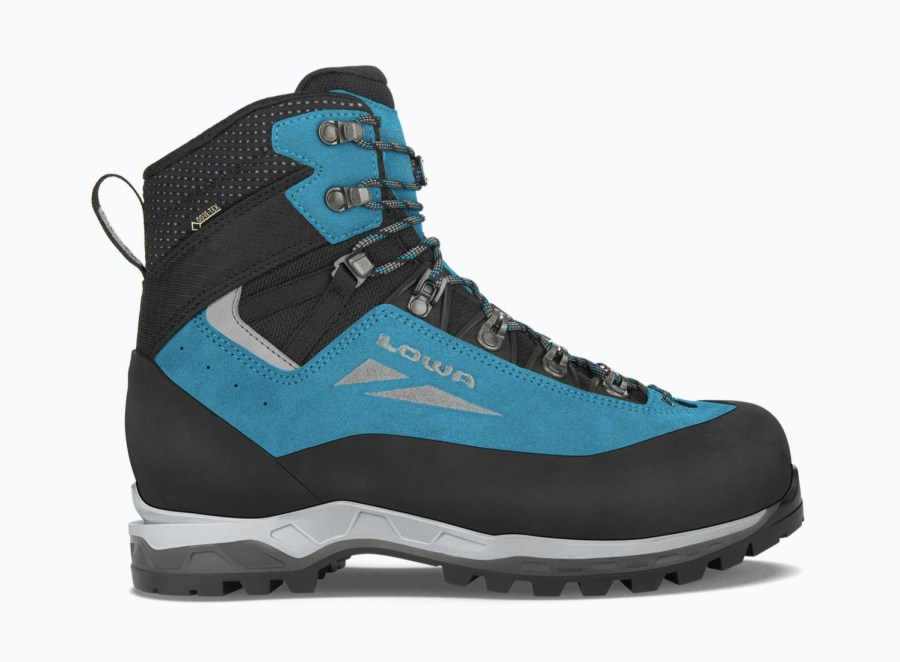
This, by Lowa, is an example of a winter mountaineering boot. It’s chunky, reinforced by a rubber rand and high at the ankle and the sole unit is stiff and protective.
Some will have soles that are stiff enough to hold a set of crampons. If you’re looking for boots with this capability then, instead of searching for winter hiking boots, you might find it better to explore boots that are described as winter mountain boots. More specifically, look for boots that are B1, B2 or B3 rated as this will mean they will be able to hold certain types of crampons.
Sole flexibility
Sole flexibility is an important aspect to consider when choosing a pair of boots. For tough terrain where lots of rock will be underfoot, you’ll want a sole that is stiff and that’s protective enough to block out sharp stuff. Stiffness at the sole will also help to give you a reliable foothold while scrambling up technical routes.
Three-season boots will tend to have a bit of flexibility at the sole, making them comfortable to hike long distances in. When buying a pair of three-season boots, consider the level of stiffness that you think will suit your usage. For instance, if you tend to hike rockier trails, you might want a degree of solidity and protection, but if you often hike on light, well-worn trails, then a very flexible sole will serve you better.
Leather or synthetic hiking boots?
Not all boots are created equal and it’s therefore hard to say what the best option is when you’re choosing between leather and synthetic boots. Synthetic boots generally tend to be lighter than leather boots, but then you can also find some synthetic options that will be lighter than their leather counterparts. It’s the same situation when looking at breathability and other factors too.
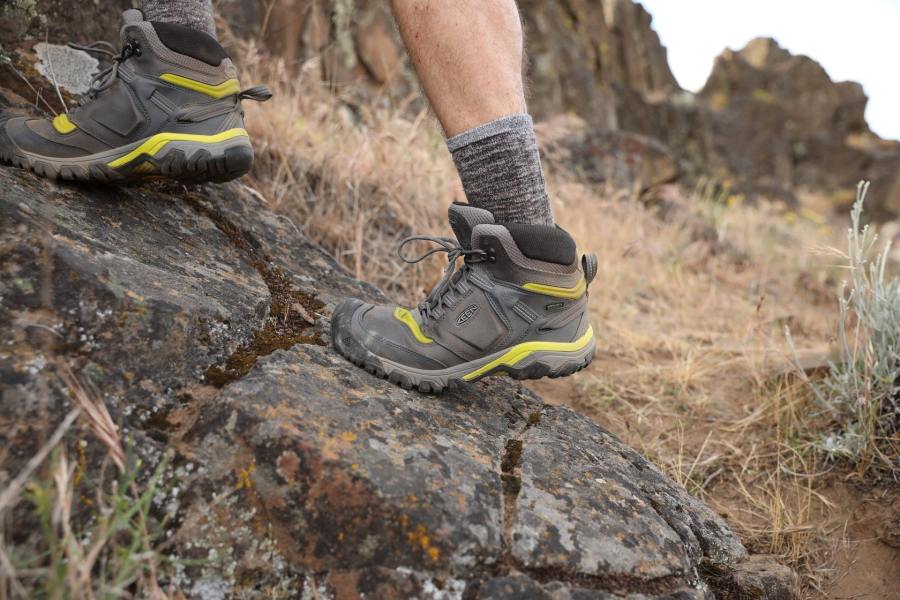
Keen’s three-season Ridge Flex. Note the flex on the sole. That’s a good thing to look for if you want a pair of boots for long-distance comfort.
That said, this author is of the opinion (not that it counts for much) that leather boots tend to be a more reliable option if you’re looking for a pair of boots that will last well. Bear in mind, however, that longevity will only come with care and maintenance because leather needs to be cleaned and re-waxed fairly often in order to prevent it from drying out and cracking. Fortunately, there are numerous after-care products that will help you with all that, with Nikwax being a reliable brand to turn to for high quality maintenance solutions.
Should walking boots be waterproof or non-waterproof?
If you tend to do a lot of hiking in cold and wet weather then it’s a good idea to look for boots that have a waterproof membrane. This will often be in the form of Gore-Tex, though there are many other high quality fabrics out there. This membrane will block out water while also allowing moisture vapour to escape from the inside.
Related: Can walking boots be re-soled or repaired?
If you tend to do most of your hiking in warm and dry conditions, you might want to consider walking boots that aren’t lined with a waterproof membrane as this will limit the likelihood of your feet overheating.
Some walkers will favour non-lined boots even when hiking in wet conditions. This will often be if they own good quality leather boots that have minimal seams and that are well maintained with water resistant wax. While this might be a traditional approach, some consider it to be the best way to strike the right balance between breathability and moisture protection.
What are the best walking boot brands?
That saying ‘you get what you pay for’ does often apply to walking boots – so does the saying ‘buy cheap, buy twice’. There are some exceptions to this rule however and you can find some really good value walking boots that will perform and stand the test of time.
AKU, Hanwag, Scarpa, La Sportiva, Alt-berg and Meindl, Lowa and Salewa, amongst others, tend to be reliable brand names if you’re looking for high quality quality boots. The common denominator there is that they’re all specialist footwear manufacturers.
Final things to consider
If you’re not familiar with a brand, it’s a good idea to go to a store and try on their boots before buying them. This is because different brands use different last designs – that’s basically the foot shape that they base their sizing and boot shape on. Some brands, for instance, tend to make boots that can be narrower or wider at certain parts of the foot than other brands and it’s often the case that what might work for one person might not work for someone else.

